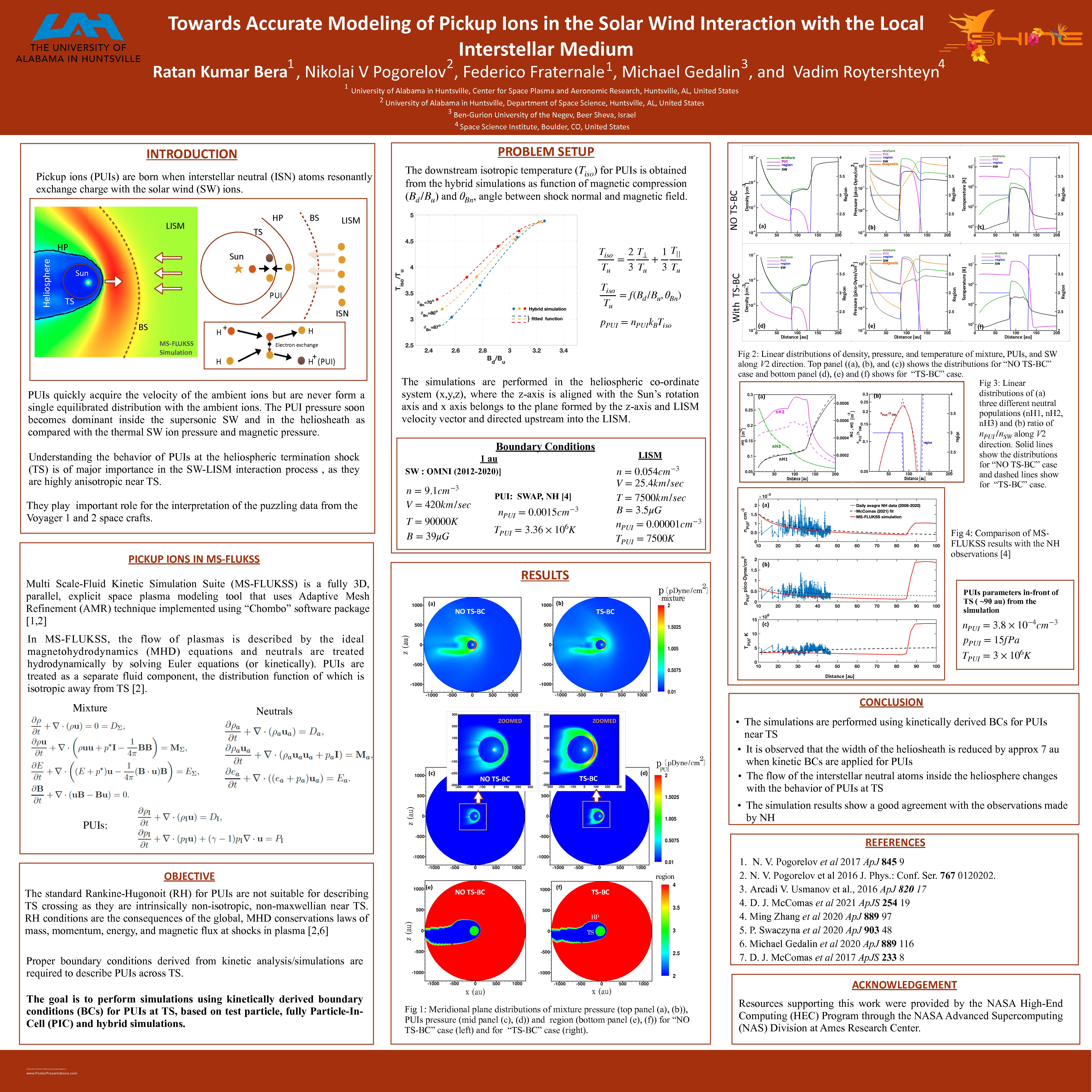Authors: Ratan Kumar Bera (Center for Space Plasma and Aeronomic Research, University of Alabama in Huntsville), Nikolai V Pogorelov (University of Alabama in Huntsville), Federico Fraternale (Center for Space Plasma and Aeronomic Research, University of Alabama in Huntsville), Michael Gedalin (Ben-Gurion University of the Negev), Vadim Roytershteyn (Space Science Institute)
The interaction of the solar wind (SW) with the local interstellar medium (LISM) is strongly affected by the charge exchange process between ions and neutral atoms. Pickup ions (PUI) are born in such charge exchange events when interstellar neutral atoms resonantly exchange charge with the SW ions. These PUIs created in the supersonic SW quickly acquire velocity of the ambient ions but are never in equilibrium with them. The PUI pressure soon becomes dominant as compared with the thermal SW ion pressure and plays a very crucial role in the SW-LISM interaction process. Of special interest is the PUI behaviour at the heliospheric termination shock (TS), where their distribution function becomes anisotropic.
To understand the effect of PUIs on the SW-LISM interaction process, a Multi-Scale Fluid-Kinetic Simulation Suite (MS-FLUKSS), which is capable of modelling PUIs as a separate ion component, is employed. This is done by treating PUIs as an individual fluid, the distribution function of which is isotropic away from the TS. The flow of the mixture of thermal and pickup ions, and electrons is described by the ideal MHD equations with the source terms responsible for photoionization and charge exchange. The MHD equations are not suitable for the description of highly anisotropic PUIs near the TS. The standard Rankine-Hugoniot relations (RH) for the determination of post-shock conditions are not appropriate because they only describe the conservation laws on the largest (MHD) scales and after the thermalization of species occurs. Proper boundary conditions for them can be derived from the kinetic analysis based on test-particle, full Particle-in-Cell (PIC), and hybrid simulations. We derive such boundary conditions and use them to model the 3-D SW-LISM interaction. Our new results are compared with those obtained with the traditional approaches that ignore the kinetics of ions crossing the TS. It is shown that the results obtained with the realistic treatment of PUIs are dramatically different while being more consistent with observational data. We also show a comparison between the simulation results and the observations made by the Solar Wind Around Pluto (SWAP) instrument on board New Horizons.


